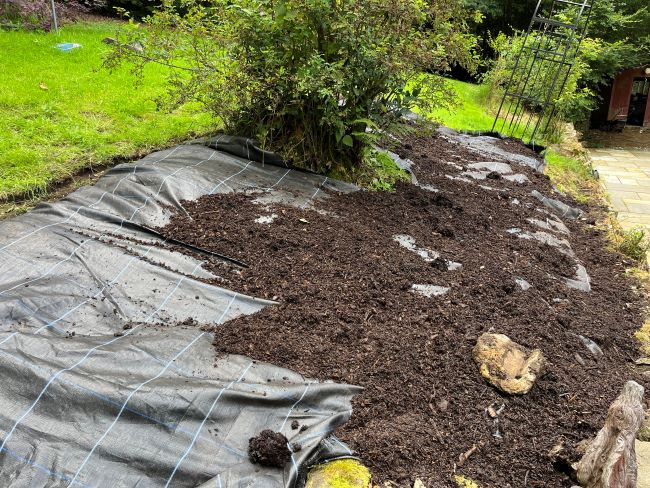Mulching Magic: Transforming Carl’s Garden in Wales

Welcome to Carl’s Garden in the picturesque landscape of Wales, where we’re about to embark on a journey of mulching mastery. In this article, we’ll delve into the art of mulching, sharing the steps and strategies that can turn your existing flower borders into thriving, vibrant landscapes. So grab your spades and let’s get mulching!
Preparing the Canvas: Mulching the Existing Flower Borders
The first step in our mulching adventure involves transforming existing flower borders into a canvas for botanical excellence. Imagine lush flowerbeds free from the clutches of unruly weeds or overgrown grass. To achieve this, follow these essential steps:
- Taming the Wild: Begin by chopping down any existing weeds or grass that might have taken over your borders. Clearing the canvas allows your plants to take center stage.
- Defining the Border: If the grass or weeds have grown out of control, it’s time to define the border. Use a spade to create a trench approximately 4 inches wide along the edge of your border. This crisp border demarcation adds structure to your garden and prevents encroachment.
- Laying the Foundation: Now, it’s time to lay the groundwork for a weed-free future. Spread a plastic ground sheet directly onto the prepared area, ensuring it covers the entire expanse. Secure it in place with pegs, preventing any chance of it being whisked away by the wind.
Crafting the Mulching Masterpiece: From Plastic to Mulch
With the groundwork firmly established, we transition from plastic sheets to the true star of the show—mulch. Mulching not only enhances the visual appeal of your garden but also provides essential benefits to your plants. Follow these steps to create your mulching masterpiece:
- Assessment and Approval: Before diving into mulching, take a moment to admire your well-prepared canvas. Ensure that the plastic ground sheet is securely in place and ready to support the mulching process.
- Mulch Selection: The mulch you choose can make a significant difference in the aesthetics and health of your garden. Wood chips or bark chips are popular choices that not only look charming but also provide insulation and weed suppression.
- Mulching Marvel: Spread the chosen mulch evenly across the prepared area. Make sure the mulch layer is of an appropriate thickness, generally around 2 to 4 inches. This layer will protect your plants’ roots, regulate soil temperature, and conserve moisture.
Alternatives for a Sustainable Touch: Cardboard vs. Plastic
While plastic ground sheeting can effectively suppress weeds, it may not align with sustainable gardening practices. Consider the following alternative:
- Cardboard Cover: In areas where the weed presence is moderate or non-existent, opt for a sustainable alternative. Lay heavy-duty cardboard directly onto the cleared ground. This eco-friendly option acts as a natural barrier against weeds, breaking down over time and enriching the soil.
The Grand Finale: Carl’s Garden Transformation
As you step back and survey your transformed garden, a sense of accomplishment and pride will wash over you. The mulching process has not only rejuvenated the aesthetics of your flower borders but has also set the stage for healthier, more robust plant growth.
From the meticulous preparation of the ground to the creative choice of mulch, you’ve embraced the art of mulching and brought a touch of magic to Carl’s Garden in Wales. As the seasons change, your garden will flourish in its newfound splendor, all thanks to the power of mulching. So go forth and let your garden thrive with the wonder of well-executed mulching!